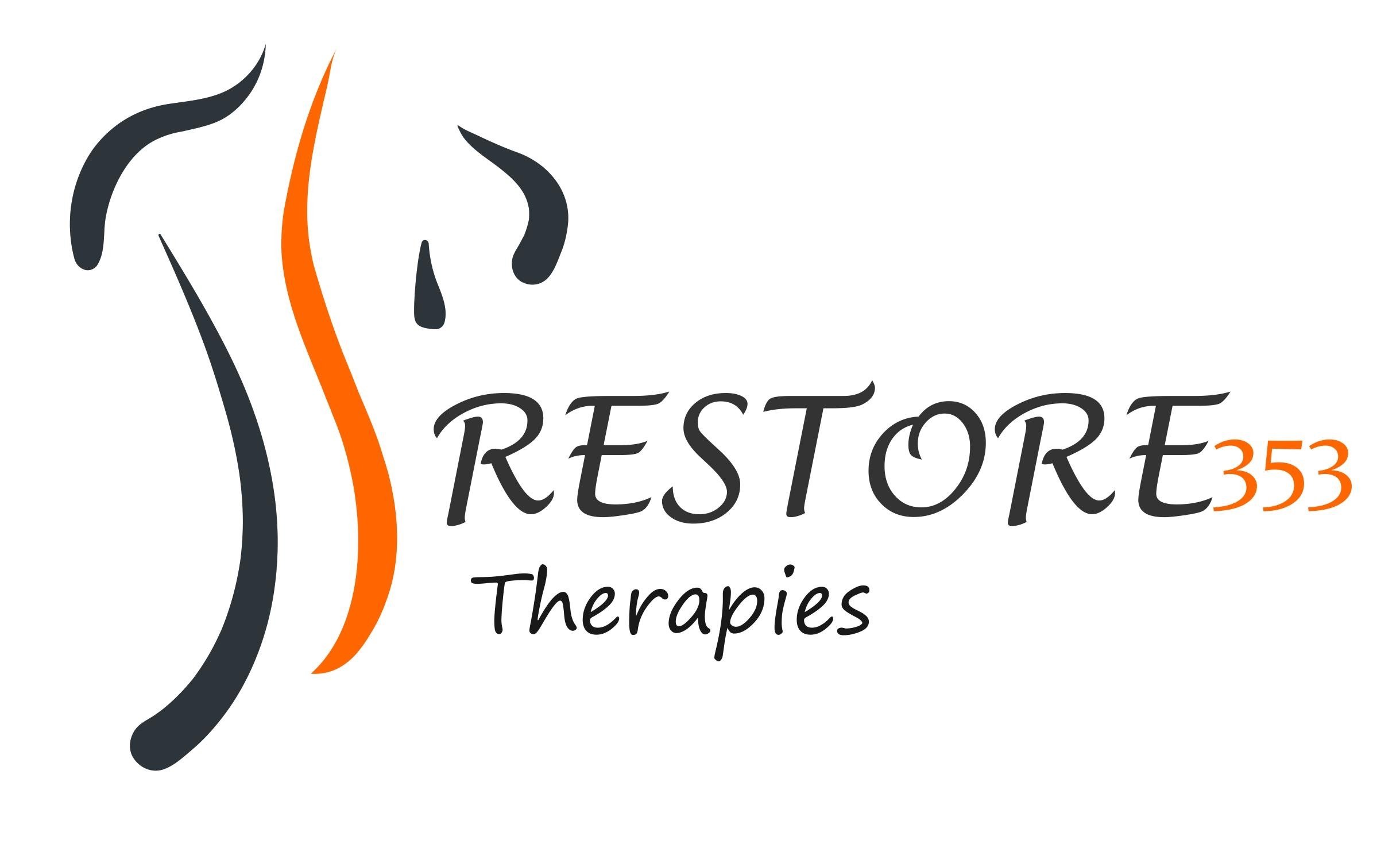Pectoralis Spasm Due to Poor Posture
Another upper body issue we see from poor posture in the upper body, is spasm of the chest muscles, known as pectoralis major and minor. We'll refer to it as "pec major" and "pec minor".
The pec major is the big muscle that covers most of the chest area. The pec major attaches from the sternum and collarbone to the upper arm. The pec minor is smaller and attaches from the 3-5th ribs to the coracoid process on the front, top portion of the shoulder blade.
With poor posture, including rounded shoulders and increased mid-back (thoracic) curving, the humerus (the large bone that attaches to the shoulder blade, which forms the shoulder joint) rotates inward and results in compensatory tightness of these chest muscles. Since the pectoralis major also attaches to the collarbone, when it's tight, the pec major can pull the chest and shoulder areas downward/forward; thus, creating increased resistance to the shoulder moving in external rotation. This, in turn, can lead to increased stresses on the anterior shoulder joint and it's surrounding tissues, including: the attachments of the rotator cuff muscles, ligaments, and muscles. Also, by these muscles pulling down on the chest, this can lead to decreased expansion of the lungs, poor breathing techniques and contribute to an increased curvature of the thoracic region.
In the below image, the red arrows show the direction of the muscle fibers of the pec major and the green arrows illustrate the pec minor.
Image: Atlas of Human Anatomy, Frank Netter M.D.
Many patients come to our office with complaints originating from poor posture, and most of the time, they are not even aware of what created the problem. Some with poor posture don't even realize they have poor posture, and some are in complete denial. When explained to them how they deviate from the correct posture, many disregard it or ignore it. And when a plan of correction is presented, they also disregard it, believing a few sessions of muscle therapy will fix the problem. A good percentage of people totally dismiss the idea of having to do any exercise during their rehabilitation, and when their results are short lasting, they question why they are not getting good results.
With this in mind, we can review some case scenarios:
Case1:
Patient presents Restore353 with pain in the forearm. After examining, the patient is diagnosed with tendinitis of the wrist and hand flexor muscles (the ones that close the hand when making a fist). The patient states they spend 8-10 hours a day working on the computer. When asked how they sit, they display a round shouldered/slumping posture. As we check the muscles in the upper arm, we see that there is extreme tightness in all the muscles on the inside of the arm. This includes the biceps, brachialis, and anterior deltoid. As we move to the chest area, we see the pectoralis major and minor are both very tight. We can see the posture of the arm is fixed in internal rotation. As the patient uses the keyboard all day, extra pressure is exerted in the inner (medial) forearm, causing overuse of the flexor muscles and causing tendinitis. This is one example how muscle spasm in the chest can affect other areas and cause pain that may not seem related. Correction of the posture to reduce the internal rotation of the shoulder is necessary to completely alleviate this problem. The patient was not aware of this postural change was attributing this pain from another reason. This is why it's extremely important to be aware of our body and what we are doing with it.
Case 2:
Patient presents Restore353 with neck pain and pain traveling from the neck to shoulders. Patient also spends many hours a day on the computer. Examination revealed muscle tightness in the neck and upper shoulder muscles. When patient is asked to externally rotate the arms, there is major restriction with tightness. Further examination revealed muscle spasm of the rotator cuff and pectoralis major muscles. When the patient was instructed on the correct posture for sitting, they were not able to be placed in this position because their chest muscles were so tight that their shoulder blades were not able to pull back to the correct posture. Without the chest muscles relaxing, a proper posture could never be assumed. Here is another example of how tightness in the chest muscles can affect the overall condition of a person.
Case 3:
Patient presents Restore353 with neck pain, jaw pain, and headaches. They complain of much stress that has been increasing over the last months. They state that they don't exercise and lead a mostly sedentary lifestyle. Observation of the patient reveals they have a round shoulder posture, their neck looks compressed and shifted forward to the body, their shoulders and arms are turned inward. Their upper body appears to be leaning forward with the chest sinking in, pulling down on the neck and head. There is muscle spasm of the anterior neck muscles, Sternocleidomastoid (scm), the upper trapezius, jaw muscles, and the pectoralis major. There are restricted movements of the head, neck and jaw. In this scenario we see how the combination of muscle spasm in the chest, shoulders and neck cause a compressive force in the neck and tightness in the jaw. This can lead to degeneration in the neck/cervical spine, herniated discs, TMJ, and headaches. This is another example of the negative synergistic effects of poor posture leading to compensatory muscle spasm causing more significant health conditions. Again, correction of the posture to reduce spasm of all these muscles is necessary to regain proper function and reduce pain.
So, we can see how the chest muscles play a significant role in the overall posture and if they are not recognized and corrected, many of the upper body mechanical faults and conditions cannot be resolved fully.


